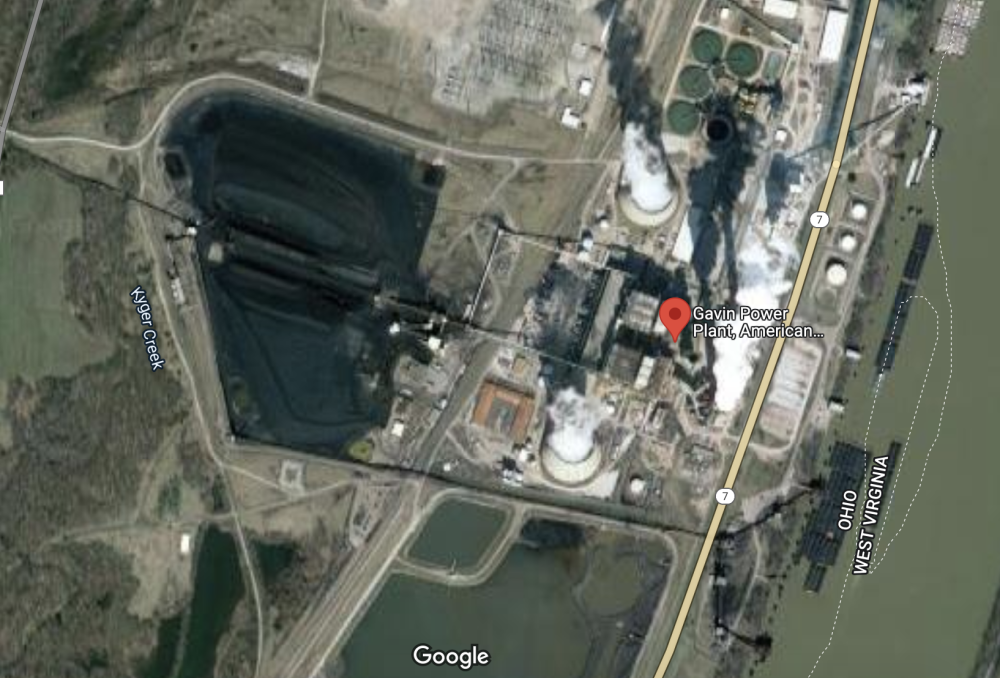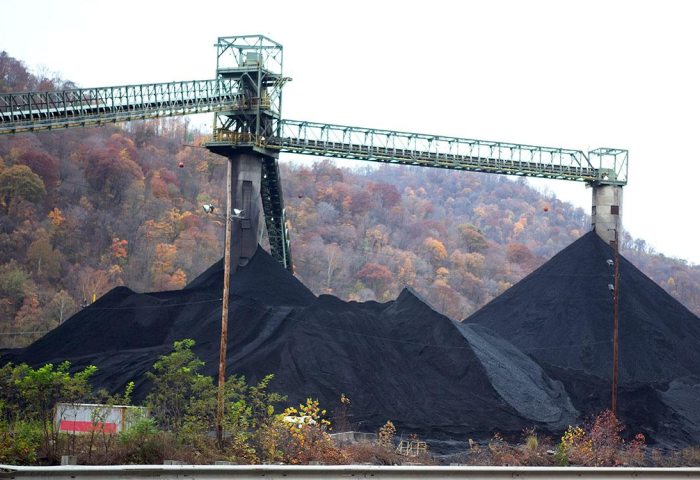
by Neil Waggoner, Ohio Senior Campaign Representative of Sierra Club's Beyond Coal Campaign
On April 20, 2022, the Wall Street Journal reported that Lightstone Generation, LLC, which owns the Gavin coal-burning power plant in Cheshire, Ohio, is seeking a debt exchange with lenders - including Goldman Sachs, Deutsche Bank, Credit Suisse, and RBC Capital Markets - to extend its $1.7 billion loan by three years, from 2024 to 2027. Sierra Club calls on Gavin’s lenders, all of which have policies that restrict financing for coal-fired power plant generation, to decline any refinancing arrangement that would prolong operation of the Gavin plant or make any postponement conditional on Lightstone’s commitment to retiring Gavin as soon as practicable.
In a state known for coal plant bailouts and boondoggles, the 2,600-megawatt Gavin plant is particularly infamous. Gavin is Ohio’s largest coal plant and the seventh largest in the nation. The plant, however, is probably best known for its history of significant environmental and public health issues, including a “blue plume” of sulfur dioxide that would spew out of the towering smoke stacks and roll over the town of Cheshire. In 2002, after lawsuits and repeated air pollution issues, the then-owner of the plant, American Electric Power, paid $20 million to buy out Cheshire. AEP subsequently demolished all the homes of residents that accepted the buy out and moved, leaving empty lots where a community once stood. The history of the buyout and the story of those that remain was documented in the 2016 documentary, Cheshire, Ohio.
Gavin is a major contributor to unsafe levels of air pollution in Ohio, neighboring West Virginia, and downwind big cities on the Eastern seaboard. Gavin is the 32nd largest source of nitrogen oxides emissions in the entire country. Nitrogen oxides are a precursor pollutant to ground-level ozone, aka smog, meaning Gavin contributes to the unhealthy summer air in all the big cities of the East. In addition, air emission modeling submitted by Sierra Club to EPA shows Gavin has caused levels of sulfur dioxide (SO2) around the plant to exceed the National Ambient Air Quality Standards. Exposure to SO2 in even very short time periods—such as five minutes—has significant health impacts, including decreased lung function, and aggravation of asthma and existing heart disease, which leads to increased hospitalizations and premature deaths. Situated right beneath the most intense portion of this sulfur dioxide plume is a women’s prison with 543 inmates, the Lakin Correctional Center.
Further, Gavin’s handling of coal ash has been so mismanaged that EPA has proposed temporarily shutting down the plant entirely because there is no place on-site to legally place coal combustion byproducts. Coal ash contains some of the deadliest known toxic chemicals, including heavy metals like arsenic, lead, mercury, and chromium. Under federal regulations, coal power plants were required to close all unlined surface impoundments by April 2021. (Surface impoundments are ditches or other man-made depressions into which wet-processed coal combustion byproducts are dumped for processing or storage.) Gavin requested an extension from EPA to close its unlined Bottom Ash Pond. In January 2022, EPA proposed denying this extension request for a plethora of reasons. Groundwater sampling around Gavin shows excess levels of boron, chloride, dissolved solids, fluoride, calcium, and sulfate; EPA found Gavin’s attribution of these exceedances to sources other than its unlined pond and landfills was “merely hypothetical and speculative.” EPA found that Gavin had not demonstrated it was moving to close the Bottom Ash Pond as quickly as possible, that its plans for closing the pond were inadequate, that a different unlined impoundment (the Fly Ash Reservoir) sits in groundwater and is likely leaking, and that Gavin did not include enough information to show that the new storage it is building meets regulatory requirements. Gavin was put on notice that if the proposed decision becomes final, it will need to cease placing coal ash waste in the Bottom Ash Pond within 135 days from that final decision, a prohibition that will force the plant to stop operating indefinitely.
Gavin’s pollution is also a financial risk. If EPA’s proposed Good Neighbor rule becomes final, Gavin will be required to reduce its nitrogen oxide emissions, which will increase its operating costs. If EPA’s proposed coal ash pond decision becomes final, Gavin may be subject to a prolonged forced outage while it constructs compliant coal ash storage at the site, risking capacity as well as energy revenues. EPA also indicated that it lacked sufficient information in Gavin’s materials to determine whether the alternative coal ash storage facilities already being constructed will comply with federal standards, raising the possibility that Gavin will need to budget additional funds to re-design and construct compliant ponds.
Retiring the Gavin coal plant would not just be good for the people of the Ohio River Valley, children with asthma in big cities from Boston to Cincinnati, and the climate, it’s also a sound business decision. An extensive analysis by IEEFA in October 2021 showed the plant is economically nonviable in the medium term.
All four of Gavin’s largest lenders–Goldman Sachs, Deutsche Bank, RBC, and Credit Suisse–have policies that restrict financing for coal-fired power plants:
-
Credit Suisse has promised not to “provide any form of lending or capital markets underwriting for any company, including existing clients (as of 2020), “that…derive[s] more than 25 percent of its revenue from coal power generation” unless the client has a “credible transition strategy to a lower carbon business model.”
-
Deutsche Bank claims it will only offer financing to companies that “are more than 50 percent dependent on coal” (measured by either capacity or actual generation) if those companies “present credible diversification plans.”
-
RBC has identified coal-fired power as “high risk,” will not finance transactions where the proceeds will be used to finance new coal power plants or provide finance to new clients whose generation assets are more than 60 percent coal, and has claimed it will support existing clients “in their transition to lower carbon emissions.”
-
And Goldman Sachs has committed not only to decline to finance any new coal fired generation, but to apply “enhanced due diligence” (including regulatory compliance, violations, and citations; remediation methods; impact on water quality; and local community issues) to all “transactions involving power generation.”
Gavin’s lenders now have an opportunity to make good on their environmental promises. Lightstone has not announced a retirement date for Gavin or offered a credible transition strategy away from coal, which makes up more than 50 percent of its generation capacity. Goldman Sachs, Deutsche Bank, RBC, and Credit Suisse have each made a commitment not to financially support the climate destruction caused by coal and to leverage their existing financial relationships to wind down the use of coal generation. These goals are entirely inconsistent with prolonging financing for Lightstone beyond 2024. Rather than extend Gavin a lifeline, lenders should make the environmentally and economically sound decision and get out of the coal business, either through repayment or retirement.
